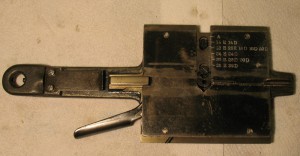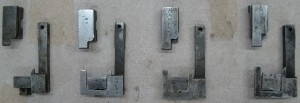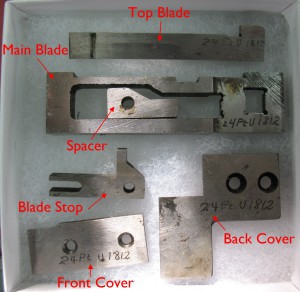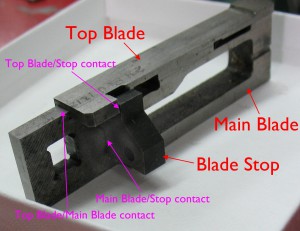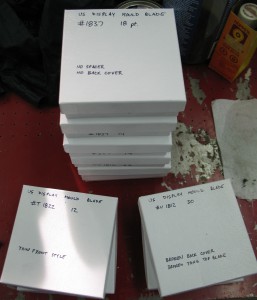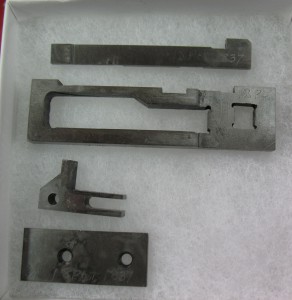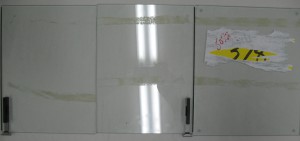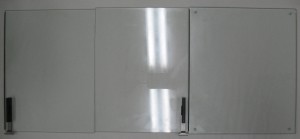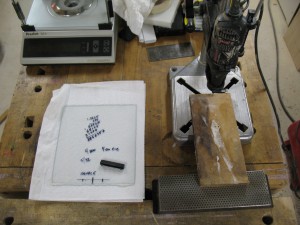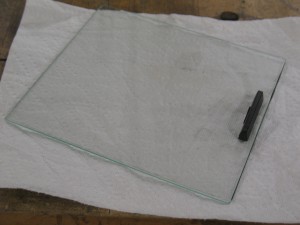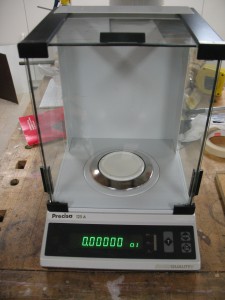In a post about two years ago concerning our then-newly-acquired Kelsey press I mentioned that I had made my own composition rollers for it. Someone had inquired about how I made these, and it has taken me this long to get my notes and references together. This post discusses some of the references I had to work from.
My starting point was a document I found online, La Fabbricazione dei Rulli, which appears to be chapter 25 of a book entitled IL libro e L’Arte della Stampa, published in 1914 and reprinted in 1925, by libreria Editrice Internazionale di Torino. The extracted document was prepared by Gianolio Dalmazzo, director, regia scuola tipograficae di arti e affini in Torino. The document is in Italian, and most of the information presented here (including the bibliographical information) is from a mix of Google Translate and my own knowledge of Romance languages. So the document is Roller Fabrication, chapter 25 of The Book and the Art of Printing.
This document gives several recipes for rollers:
- Weak type:
- parts 1 of animal glue, 2 of fish glue, 4.5 of glucose, 0.5 of glycerin;
- parts 8 of glycerin, 10 of sugar, 8 of gelatin glue;
- 2.2kg of glue, 4.7L of molasses, 0.57L of glycerin, 600g of turpentine of Venice;
- 2350g of gelatin glue, 400g of water, 600g of boiled linseed oil, 250g of potash, 600g of sugar.
- Medium type:
- parts 2.8 of strong glue, 0.3 of glucose, 1.3 of glycerin, 0.6 of fish glue:
- 2.8kg of glue, 4.5L of molasses, 0.6L of glycerin, 60g of turpentine of Venice;
- 1.5kg of glue, 5kg of sugar, and 6kg of glycerin;
- parts 35 of glue, 30 of glucose, 15 of glycerin, 20 of sugar.
- Strong type:
- parts 13 of strong glue, 3 of molasses, 3 of glycerin;
- parts 12 of gelatin glue, 6 of glycerin, 10 of sugar.
- The strongest type:
- 5kg of glue, 8L of tawny molasses, 450g natural rubber melted in turpentine oil, 60g of turpentine varnish, 360g of glycerin, 120g of vinegar;
- 6.5kg of strong glue, 0.6L of glycerin, 9L of dark molasses, 1kg of turpentine of Venice, 1kg of Paris white (calcium carbonate). If the beet molasses is replaced with sugar cane [cane molasses?], better rollers are had.
All these recipes include some form of gelatin, some form of sugar, and glycerine. Some of them add to this rubbery or resinous materials, probably for more strength and heat resistance. Such materials might make it difficult to melt down an re-use old rollers. I’m particularly wary of the recipe that uses boiled linseed oil, which will gradually and irreversibly harden with age as it oxidizes.
Within these recipes, there are unknown variations because the purity of the materials is uncertain. Molasses may vary as to sugar contents (both in terms of types of sugar and also other non-sugar solids), animal glues come in different grades, and glycerin is difficult to produce completely free of water. Furthermore, the recipes did not come with cooking directions.
For my purposes I wanted to limit myself to three basic ingredients: regular white cooking sugar (sucrose), woodworker’s hide glue (Lee Valley Pearl Hide Glue 56K50.05), and food grade glycerine (water content unknown). The gelatin in the glue provides the rubbery texture, the glycerine holds water to prevent the composition from drying out, but the sugar’s purpose isn’t obvious. Perhaps it makes the composition tacky. I would have to try making a mix with no sugar to see what it is like.
Sugar
According to Water vapour sorption isotherms and the caking of food powders [Mathlouthi, M., Rogé, B. Food Chemistry Volume 82, Issue 1, July 2003, Pages 61–71], below 86% relative humidity sugar (sucrose) loses all its water, although it can also remain as a metastable glass (think peanut brittle) with higher water content. Stable water content depends on crystal size but is in the general range of 200ppm, essentially zero for our purposes. Above 86%RH sugar absorbs water and dissolves in it to form a syrup.
So if the room is going to be below 86%RH, some humectant must be included to prevent the rollers from drying out. On the other hand, above 86%RH, the rollers will absorb humidity uncontrollably and will melt into a gooey syrup.
Glycerine
The Soap and Detergent Association (New York) published a booklet in 1990 entitled Glycerine: an overview. One thing this clears up is that glycerin, glycerine, and glycerol are various names used inconsistently and often interchangeably for essentially the same compound, although in some circles, the choice of name depends on water content. I suppose “clears up” isn’t such a good choice of words, but this means it is not necessary to fret over the distinction.
Glycerine left in the open will absorb water from the air depending on the relative humidity. The following values were taken from a graph in this booklet (the glycerine and water percentages are by weight):
| %RH |
% glycerine |
% water |
water/glycerine |
| 20% |
97 |
3 |
0.03 |
| 30% |
93 |
7 |
0.08 |
| 40% |
89 |
11 |
0.12 |
| 50% |
84 |
16 |
0.19 |
| 60% |
76 |
24 |
0.32 |
| 70% |
67 |
33 |
0.49 |
The last column is significant because it gives some hint as to how much swelling or shrinkage a roller can undergo between a heated room in the winter (20-30%RH) and summer conditions (60-70%RH). This also shows how it is important that the rollers be cast with the correct water content so they don’t end up the wrong size once they have reached an equilibrium with the current room air.
Gelatin
Gelatin is a family of proteins extracted from the collagen in animal bones, skin, and connective tissue by boiling then in water. It has the property that above a specific temperature, it dissolves in water to form a liquid (called the sol phase), and below that temperature, the sol gradually sets into a rubbery solid, the gel phase. The transition temperature depends on how the gelatin is produced but is typically a few degrees below body temperature so gelatin-based foods dissolve in the mouth. The water concentration only affects the strength of the gel (both in terms of elasticity and also rupture strength), not the transition temperature.
Grades of gelatin are rated for stiffness using the Bloom test, measuring the elasticity of a 6.67% gelatin solution stabilized at 10°C. The hide glue I use is rated at 150g Bloom strength, but there is another grade rated at 260g which I would expect would make much stiffer rollers.
When the composition is cooked, the gelatine gradually degrades, which reduces its strength and probably its transition temperature as well.
Pigments and Fillers
When made with pure gelatin and white sugar, the rollers should end up translucent white. If molasses and/or hide glue are used, the result will be a shade of brown. Sometimes powders are added to the composition (as the Paris White in one of the quoted recipes). These are chemically inert but the interfere with the elastic deformation of the composition so they make the roller harder without increasing its tear strength. They also make the roller opaque, so composition that would have been dark translucent brown might instead have a caramel colour. A roller made with pure gelatin and white sugar could have almost any colour one wants. Of course, the colour of the roller itself it pretty much immaterial, other that having a good contrast with the ink makes it easier to clean then thoroughly.
To use such pigments, the main difficulty would be to disperse them in the molten composition without trapping any air. Fine pigment particles have a strong tendency to form small clumps around microscopic air bubbles, and such bubbles would ultimately lead to a porous hard-to-clean surface on the rollers. The pigments are formed into a paste with one of the liquid ingredients (probably the glycerine) so no additional water is added to the recipe. The clumps and bubbles can be worked out by mulling the pigment paste or using an ink grinder, or it might be possible to extract them by applying a vacuum to the paste.
Preservatives
The composition is so low on water content (and what water is present is bound to other ingredients) that decay of the composition is unlikely. A moistened surface, say, due to bringing a cold roller into a damp room, might encourage growth of mould on the surface. The best way to avoid this is to keep the rollers dry so the mould doesn’t have a chance to establish itself in the first place. However, copper compounds have fungicidal properties, so a small amount of copper sulphate can be added for protection. This will add a bit of blue to the roller colour, so ones that would be brown tend to become closer to black instead.
The biggest problem is that animals, especially rodents like mice and rats, and likely including ants as well, just love this stuff. Sugar, gelatin, and something else that is sweet-tasting (glycerin)? What more could they want! I don’t know how the critters feel about copper sulphate. Poison ant bait contains boric acid which the ants bring back to the colony, killing them all, and poison rodent bait contains anticoagulants (including Coumadin) causing them to bleed to death. I would not recommend trying to add either to your composition.
Putting it all together
In order to follow a recipe for composition rollers, you need detailed descriptions of the ingredients. Some variables, like water content of glycerine and molasses, can be compensated for by adjusting cooking time. On the other hand, variations in the impurities between different varieties of molasses or hide glue becomes a source of unpredictability.
Ideally you want the ingredients to start with the correct water content since extended cooking degrades the gelatin. As well, casting the rollers with too much water and letting them acclimatize later results in rollers that are too small and with their surface under tension making them vulnerable to splits and tears.
Composition rollers require care: they have to be kept below 86%RH and also below the gel transition temperature of the gelatin, or they will melt. They also have to be used in the range of humidity they were designed for; otherwise they will be the wrong size and hardness. In extreme cases a roller can tear because it is fragile from softness, or it can crack because the shrinkage around its core has puts it under a lot of tension.
Questions to answer
One question already raised is: what does the sugar do? To test this I would make test batches with widely varied sugar content to see how they differ. My expectation is that the surface texture will be affected.
How does the stable water content vary with changes to the ratio of the three major ingredients? Again, I can try test batches poured out onto foil and weighed regularly over a few days to see how much humidity they ultimately absorb. The main uncertainty here is the water content of the glycerine.
How does the hardness vary with ingredient ratio changes? For this test I would have to find myself a Shore A Durometer for measuring the resilience of the composition.

